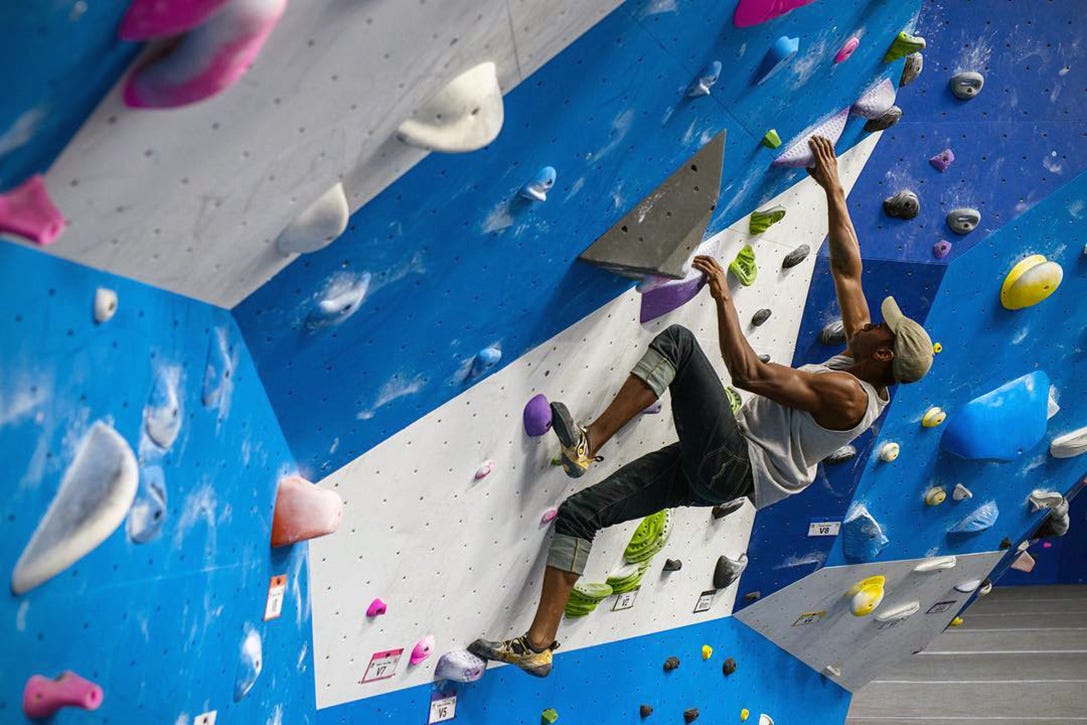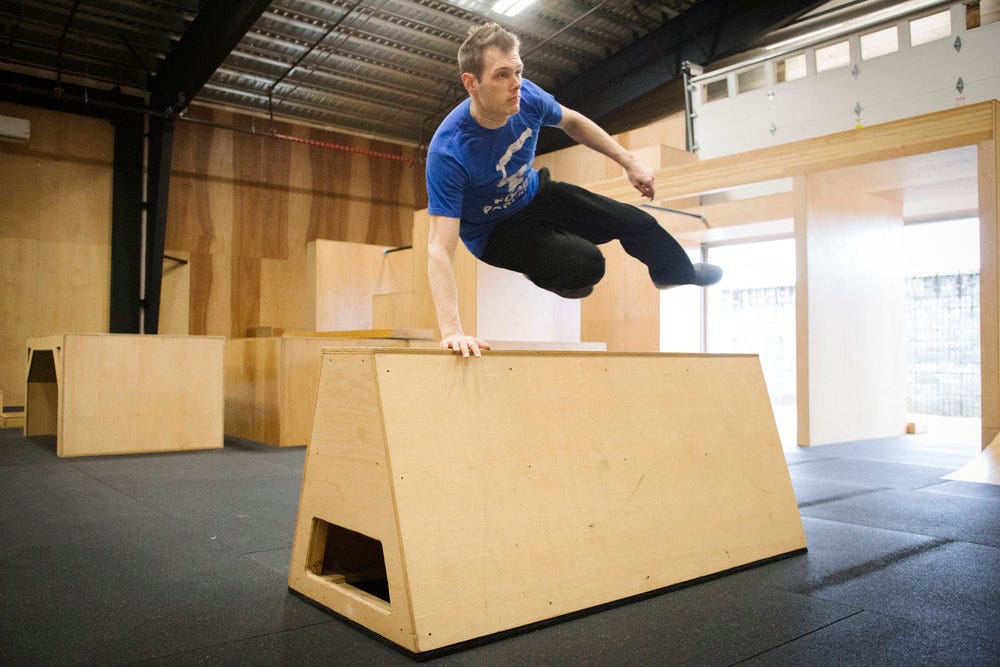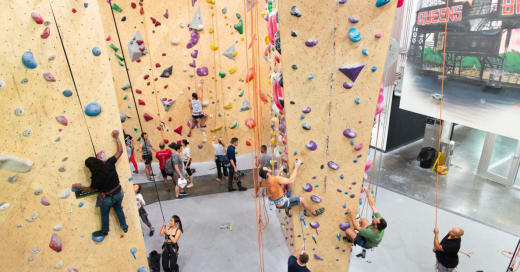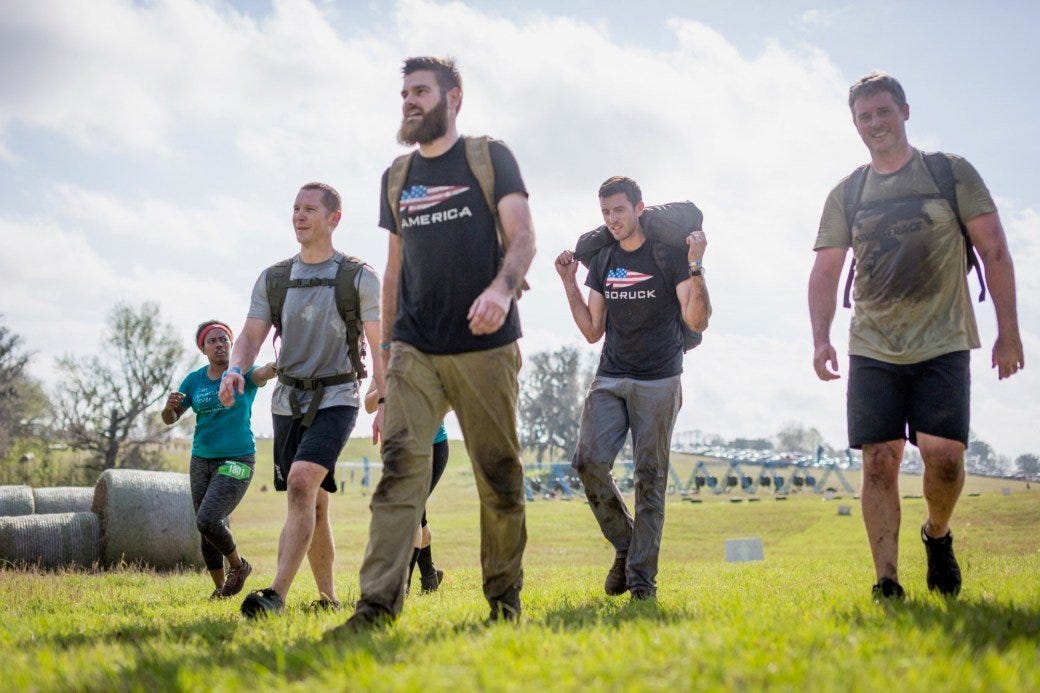Embracing Play As A Microgym
How does your fitness program translate to the fun stuff outside your walls?
A few weeks ago I announced that I’m officially working with MADabolic.
Gym ownership retirement has opened some pretty awesome opportunities now that I’m a free agent.
I’ve always been impressed with the MADabolic franchise model, dating back to my first formal piece of content I created with them back in 2017.
And now I’ll be working alongside the leaders at MAD HQ to help connect them with potential franchisees - many of whom I believe are current microgym owners.
Several of the individuals I’ve been speaking with about this opportunity currently run a successful microgym - either their own brand or typically a CrossFit affiliate.
These microgyms have seen success on the far end of the spectrum (barbell biased strength + conditioning) and on the other side of the spectrum, they don’t ever see themselves investing in the cardio-based models (Orangetheory, F45, etc) - so they are investigating the brand that has dominated this whitespace in between.
Makes sense too. Owning a successful CrossFit and a MADabolic allows you to be more things to more people without having to turn your own brand into a bi-polar disaster.
So for anyone out there that has been following along with my content coverage of MADabolic, and you’d like an honest, third-party perspective as to whether or not this might be the right opportunity for you, hit me up and we’ll chat.
Have a great week.
Stu
Fitness + Play = Increased Retention
Time to start thinking outside your box…
Fitness + Play = Increased Retention
Time to start thinking outside your box…
The sport of climbing is on the rise.
Fitt Insider shared that in 2021, more indoor climbing gyms opened in the US than at any other time in history.
Fifty-three new facilities opened, while only eight shuttered.
63% were bouldering (rope-free) gyms.
Total climbing gyms in the US and Canada surpassed 700.
With the surge of newcomers to the sport, you have to pause and ask, why climbing?
Surely documentaries like 2018's Free Solo and the introduction of sport climbing as an Olympic sport during the Tokyo Games have played a significant role. Still, I also correlate its growing popularity to a topic we have touched on in the past - implementing FUN into fitness.
Because why fitness if you are not enjoying it?
Previously, we talked about gamifying workouts to increase membership engagement - and the climbing franchise Brooklyn Boulders has even seen success with introducing gamification to their recreational fitness business model with an interactive climbing experience called Arcade Climbing in two of their locations.
However, there are many different avenues to incorporate play into workouts, which do not directly compete or require an implementation to your core fitness offering.
Remember, fitness is recreational for 99% of the membership holding population, so why not embrace more recreation and expand your brand's influence to other fun parts of their life?
Microgyms primarily only offer fitness.
These new niche models like Brooklyn Boulders, offer fun recreation that requires fitness.
And if you can connect the fitness service you deliver, to your member’s desire to go to the rock climbing facility, sign up for an obstacle course race or let it rip at an axe-throwing bar (yes, that’s a thing), you stand a much higher likelihood of retaining your member as you are now vital to their enjoyment of their outside-the-gym activities.
I am in no way suggesting every microgym owner installs rock climbing walls, creates parkour studios, or begins offering breakdancing classes.
But, as I always say, we can (and should) learn something from the insane growth of this niche market within our fitness community - and that is bridging the gap between the work members put in inside the gym and the work they put in outside.
So, if your membership digs golf, flag football, kickball, soccer, stand up paddleboarding, swimming, or whatever-the-fuck-else recreational activity, why not embrace these two worlds - creating a Venn diagram where your brand is now the thing that connects in-box fitness and the fun shit they want to do that requires them to be fit outside of the gym.

MY TAKE
Today, countless gyms run with taglines that sound something like this:
"We improve life outside the gym."
"We prepare you for life - for the unknown and the unknowable."
"Life is a sport. We train you for it".
And that's all well and good.
However, what is that gym doing to really embrace that message?
Or are they saying what their members want to hear but expect them to come to the gym as their primary fitness pursuit?
And you might say, "well, yeah, Stu, for our programming to be effective, we do expect members to come ~4 days a week."
Herein lies the problem: If someone enjoys working out in a fitness facility and wishes to enjoy recreational activities, the balancing act required to cram all that they want to do into a week is borderline impossible.
When dealing with high-performers, busy parents, or young professionals client avatars as many microgym owners are, there is no way in hell they can successfully train at your gym four days a week, manage their day-to-day responsibilities, and still play intramural soccer two nights a week, or mountain bike three days a week.
Now, many gyms may believe the high-weekly attendance-dedicated member will never leave. But, I would argue that anyone can get bored of their fitness routine on a long enough timeline, no matter how constantly varied it is.
Human Beings are fickle - we want to try new things and constantly examine new possibilities.
So regardless of how constantly varied you think your fitness program is, when it boils down to it, you're probably rinsing and repeating the same 15 to 20 exercises.
And yes, I hate to break it to you, but people will eventually get desensitized to thruster races.
So how do we keep members?
Keep it fresh and create opportunities to incorporate outside-the-gym play.

YOUR TAKEAWAY
Higher attendance ≠ Best Member
To start off, it's important to understand that from a financial perspective, a member who is attending 2-3x/week, while doing other fitness-based activities elsewhere the remainder of the week, is a great member to have.
A member paying $160/mo for 8 classes per month has an Average Revenue Per Class (ARPC) of $20
A member paying $200/mo for Unlimited classes/mo (let's assume 16 classes/month) has an ARPC of $12.50.
If you haven’t watched the Frequency Based Pricing vs. Unlimited only video, I highly recommend it - but ultimately, we need to understand that the microeconomics of your business performs best when your ARPC is higher.
2. Retention
Additionally, a client who attends 2-3x per week, because they also participate in BJJ, endurance running, or some other recreational fitness activity during the week is:
less likely to get bored with your workouts
sees the value of your fitness service as it translates over to their other activities
doesn’t get overly involved or butt-hurt when you change up the programming, fire a coach, etc.
And now that you understand the value of a client can increase when you balance gym fitness with recreational fitness, I recommend leaning in with marketing and community.
Marketing- Create content that advocates for how your fitness will strengthen their ability to do activities outside of the gym. A great example to check out is Windy City Strength and Conditioning. Additional tactics might be to repost images of members who are hiking, running, skiing, golfing, intramural sports, etc. outside of the gym. (In fact, if this is a direction you’d want to go in, every 3rd or 4th image should include outside the gym photography or video).
Community- Create a "Live Fit" Club - think of it like quarterly excursions or retreats that members can pay for and embrace your community and their fitness outside the gym.
3. Local B2B opportunities
While you are creating your “Live Fit” Club, identify local businesses to partner with.
Identify complementary businesses within a 15-mile radius of your microgym. Maybe they offer rock climbing, breakdancing, parkour, SUP, hiking, dragon boat racing - whatever. The more obscure, the better IMO.
Then, contact them to build a growth-focused partnership.
For example, call the local rock climbing facility and ask them what their least busy day of the week is, the time slot they wish they could bolster more revenue.
Offer to organize a field trip with X amount of your members to their facility.
If you can guarantee a certain volume of participation, could your members receive a discount? Perhaps they would be willing to do private instruction for the group?
Assuming it goes well, could this be something you organize on a quarterly basis?
Going forward, could their members get some type of front-end offer at your microgym and vice versa?
The final take is this: The fitness industry will continue to see a lot of playful recreational fitness brands pop up in local markets. You can view these adjacent businesses as hostile entities that could decrease your utilization rate (rate of attendance), or you could see them as great collab opportunities.
So make a decision.
Take a proactive approach and incorporate your brand into a member's life outside of your gym, or you can take an ego-driven and an elitist mindset, believing that what you do is the one and the only thing anybody should do for fitness, and let me know how that pans out for you.
Let’s get back to making fitness less serious, embracing play, and adding another sticky point to improve retention.










